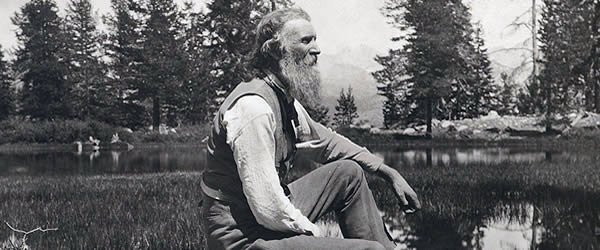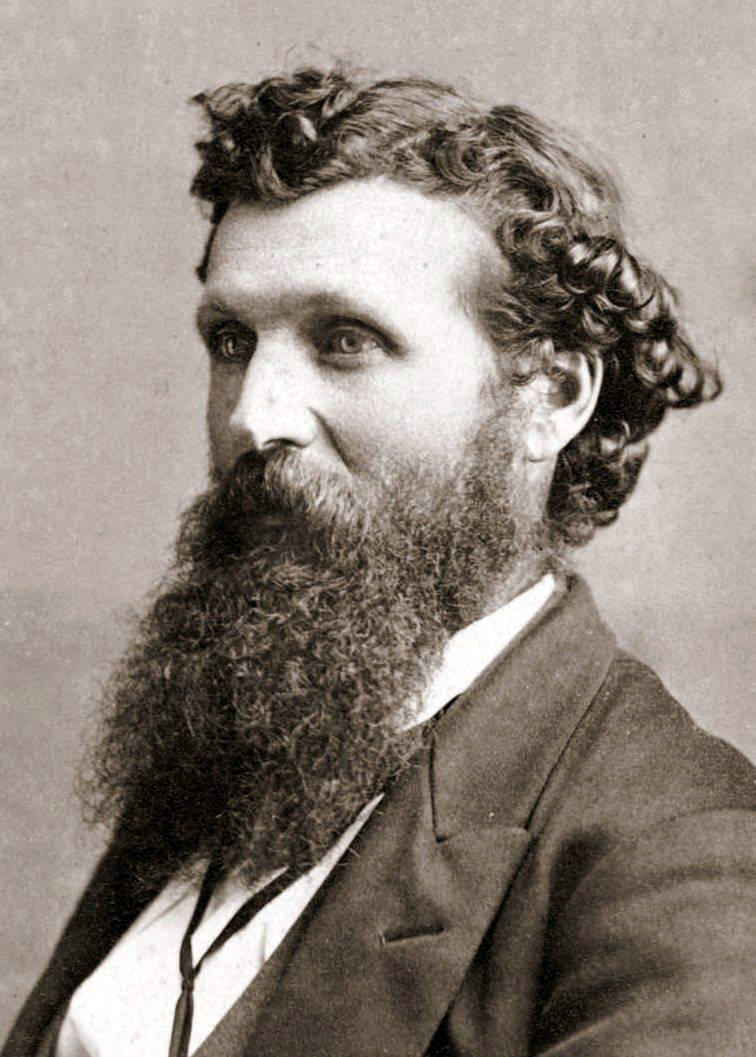John Muir (1838- 1914) Centennial of His Deathby Tom Doran As the 700th Anniversary of Bannockburn dominates much of what is being discussed this year, there are other anniversaries as well. One of them is the 100th anniversary of the death of the famous Scottish born naturalist, John Muir, whose involvement in the American preservation movement is pivotal.  John Muir was born in Dunbar in East Lothian Scotland on April 21 1838. The child of a very religious father, John had been made to memorize most of the Bible by heart. His father saw Biblical studies as the only worthwhile pursuit. Perhaps as a result, the young John found himself drawn to things in nature. 1840 saw the family move to Portage Wisconsin. He attended the University of Wisconsin in Madison and here became interested in science and soon thereafter became a naturalist and spent much of his time in the woods studying and collecting. He decided to walk from Indiana to the gulf a Mexico, a “hike” recounted in his book The Thousand Mile Walk. Later he would sail to Cuba where he collected sea shells and flowers. Muir finally traveled to California and became involved with Yosemite where he lived. His firsthand intimate knowledge of the place caused him to challenge widely held beliefs in the scientific community that Yosemite Valley was the result of a gigantic earthquake. Muir thought that glaciers had been responsible for carving out the valley and was brought into conflict with Josiah Whitney whose earthquake theory was dominant at the time. Muir had however the support of Louis Agassiz, who had postulated that the earth had been subjected to ice ages in the past. Later in life, Muir became an activist and was associated with Gifford Pinchot, a national leader in the conservation movement. They functioned together but ultimately split over Pinchot’s ideas of managing the natural resources for long term commercial use. Pinchot wanted to use the forests for “tree farming” which saw trees as a renewable natural resource. Pinchot also supported the use of forest reserves for sheep grazing. This was too much for Muir who saw the natural environment as something transcendent and a place for meditation – a kind of area set aside as “sacred”. This placed the two men into two separate camps: Pinchot who used the term “conservationist” while Muir became a “preservationist”. Muir felt that the dichotomy between civilization and nature was found in all cultures and that the wild was superior. His linking of the natural with the sacred is typical of the romantic period writers, but Muir had far more firsthand experience of the wilderness than most did. He was a great admirer of Thoreau and his year in the wilderness at Walden Pond (less than 2 miles from Concord Mass.)! Among Muir’s important contributions is the co-founding of the Sierra Club, (founded May 28 1892) one of oldest and largest environmental organizations in the United States, dedicated to conservation and was involved with protecting Yosemite by getting it under Federal control and preventing its being cut down in size. More recently it has become heavily involved recently in “green politics”. Muir was an avid writer and produced more than 300 articles and 12 books. He was friends with a number of well known figures of his day including Ralph Waldo Emerson and geologist, paleontologist and eugenicist Harry Fairfield Osbourne whose long standing relationship with the American Museum of Natural History began with his appointment as curator to the museum’s newly formed Department of Vertebrate Paleontology. Muir died on Christmas Eve, 1914 in Los Angeles. n addition to a number of events, activities and publications are planned this year one can find information about John Muir on number web sites which include: |
